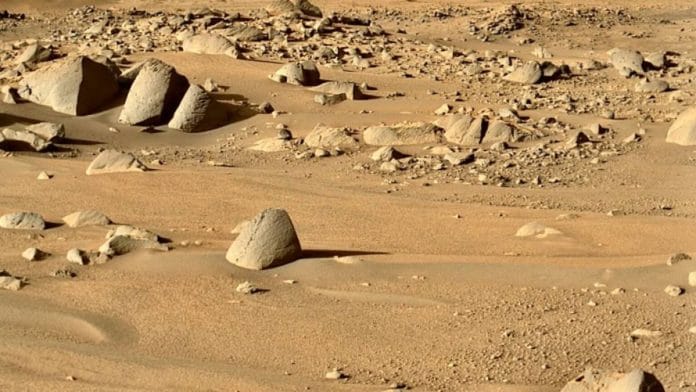New Delhi: Tranquil ocean, sandy beaches—it’s not Maldives or Goa but Mars. Ancient Mars had sun-soaked vacation-style beaches, according to a new study published Monday in Proceedings of the National Academy of Sciences.
And while the red planet may have been the hottest vacation destination millions of years ago, the findings by an international team of researchers show that it had the proper conditions to support microbial life.
The study provides fresh evidence of beach deposits, adding yet another dimension to Mars-based research.
The study team included scientists from China’s Guangzhou University and US’s Pennsylvania State University.
“Our findings not only provide support for the existence of an ancient Martian ocean in the northern plains but also offer insights into evolution of ancient Martian environment,” wrote the researchers in the study.
To arrive at this conclusion, they analysed data collected by China’s Zhurong Mars rover, which landed on the planet’s Utopia Planitia region, a large plain, in 2021.
The team scoured below the ground imaging data from the rover, which is equipped with ground-penetrating radar.
On comparing the radar data from Mars with radar images of coastal deposits on Earth, a striking similarity was found. The underground layers in southern Utopia Planitia on Mars and Bay of Bengal beach both slope downwards, towards the ocean, suggests the study.
The stacked sloping layers at different depths beneath the Martian surface indicate multiple periods of sediment deposition over time. The scientists studied 21 coastal areas on Earth and found that their sloping layers tilt between 4 degrees and 26 degrees.
The angle of tilt of sloping layers on Mars closely matches those found in coastal regions of Earth, further suggesting that both these surfaces were shaped by water-related processes.
Although rivers, volcanic activity and wind-driven sand dunes can also form sloping underground surfaces, the researchers have ruled out any of these possibilities in Utopia Planitia. Instead, the layers detected by the radars indicate a long period of shoreline movement.
“In Utopia Planitia, the sedimentary deposits are formed by ancient ocean waves and possibly composed of sand and pebble gravels transported by tidal currents,” wrote the researchers in the study.
Sneha Yadav graduated from the first batch of ThePrint School of Journalism.
(Edited by Nida Fatima Siddiqui)
Also Read: Mars had water even 742 mn yrs ago. How do we know? Thank Martian rock found in university drawer






